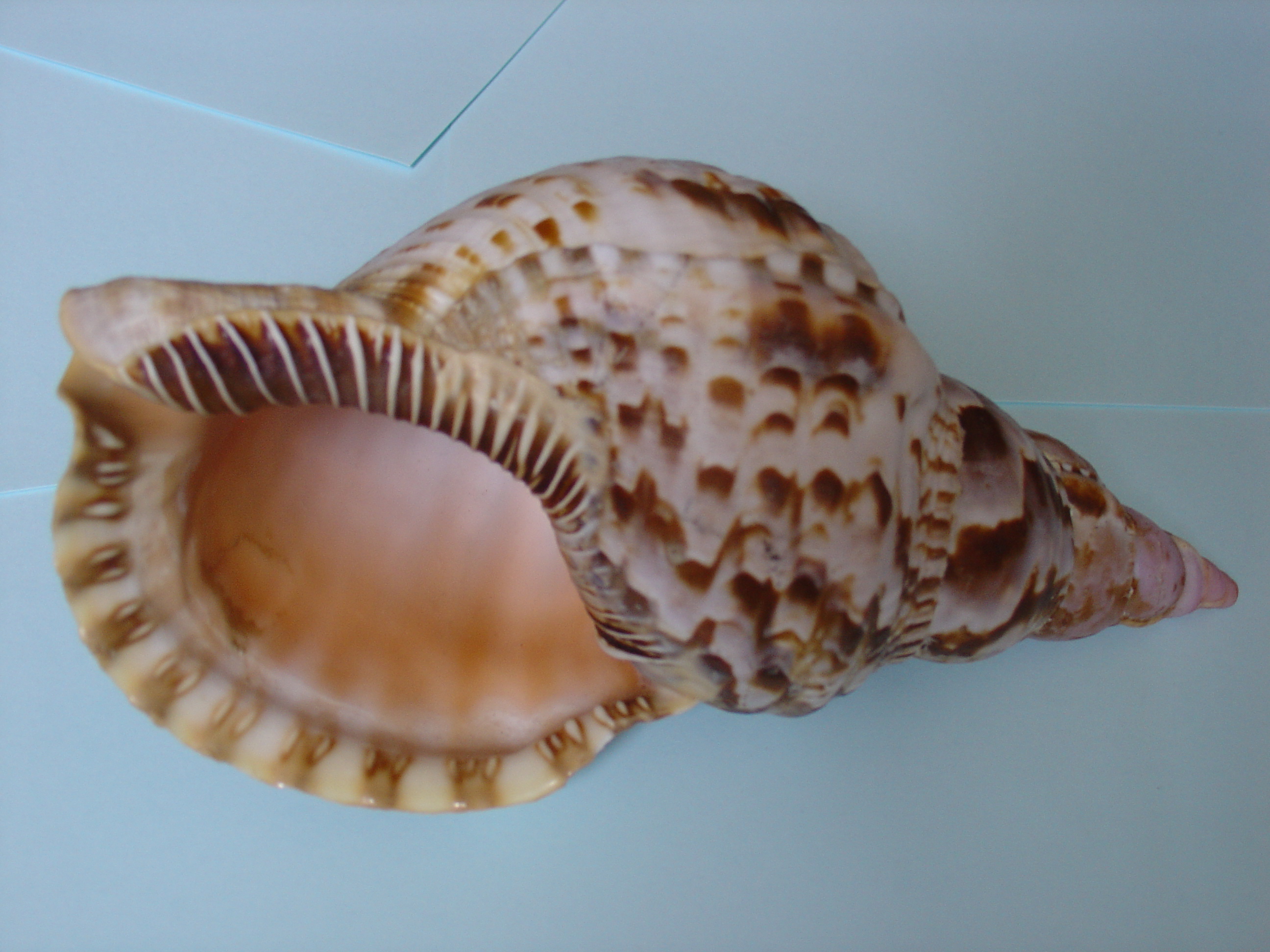- Triton (mollusk)
Taxobox
name = Triton
status = VU

image_width = 250px
image_caption =
regnum =Animalia
phylum =Mollusca
classis =Gastropoda
subclassis =Orthogastropoda
superordo =Caenogastropoda
ordo =Sorbeoconcha
subordo =Hypsogastropoda
infraordo =Littorinimorpha
superfamilia =Tonnoidea
familia =Ranellidae
genus = "Charonia"
genus_authority = Gistel, 1847
subdivision_ranks = Species
subdivision = See text.Triton is the common name given to a number of very large sea
snail s,predatory marinegastropods in thegenus "Charonia". The name "triton" is also often applied to other, much smaller sea snails of the genus "Cymatium ", within the same family,Ranellidae .Tritons are named after the Greek god Triton, who was the son of
Poseidon , god of the sea.The shell of the giant triton, "
Charonia tritonis " (Linnaeus , 1758), which lives in theIndo-Pacific faunal zone, can grow to over half ametre (20inch es) in length. One slightly smaller but still very large species, "Charonia variegata" (Lamarck , 1816), lives in the westernAtlantic , fromNorth Carolina toBrazil .Distribution
Tritons inhabit
temperate andtropical waters worldwide.Life habits
Unlike
pulmonate andopistobranch gastropod s, tritons are nothermaphrodite s; they have separatesex es and undergosexual reproduction with internal fertilization. The female deposits white capsules in clusters, each of which contains many developinglarva e. The larvae emerge free-swimming and enter theplankton , where they drift in open water for up to three months.Feeding behaviour
Adult tritons are active
predator s and feed on othermollusk s andstarfish . The giant triton has gained fame for its ability to capture and eatcrown-of-thorns starfish , a large species (up to one metre in diameter) covered in poisonous spikes an inch long. This starfish has few other natural predators and has earned the enmity of humans in recent decades by proliferating and destroying large sections ofcoral reef .Tritons can be observed to turn and give chase when the scent of prey is detected. Some sea stars (including the
crown-of-thorns starfish ) appear to be able to detect the approach of the mollusk by means which are not clearly understood, and they will attempt flight before any physical contact has taken place. Tritons, however, are faster than sea stars and only larger starfish have a reasonable hope of escape, and then only by abandoning whichever limb the snail seizes first.The triton grips its prey with its muscular foot and uses its toothy "
radula " (a serrated, scraping organ found in gastropods) to saw through the sea star's armoured skin. Once it has penetrated, a paralyzing saliva subdues the prey and the snail feeds at leisure, often beginning with the softest parts such as the gonads andgut s.Tritons will ingest smaller prey animals whole without troubling to paralyse them, and will spit out any poisonous spines, shells or other unwanted parts later.
Human use
Many people find triton shells attractive as a design object, and so they are collected and sold as part of the international shell trade. In recent years this has contributed to the animals' scarcity.
From ancient times, people of many different cultures have removed the tip of the shell, or drilled a hole in the tip, and then used the shell as a
trumpet .The Greco-Roman god
Poseidon /Neptune is often depicted holding a triton shell.pecies and subspecies within the genus "Charonia"
* "
Charonia eucla " Hedley, 1914
* "Charonia eucla instructa " Iredale, 1929
* "Charonia lampas capax " Finlay, 1927
* "Charonia lampas lampas "
* "Charonia lampas pustulata " Eurthyme, 1889
* "Charonia lampas rubicunda " (Perry, 1811)
* "Charonia lampas sauliae " (Reeve, 1844)
* "Charonia nodifera "
* "Charonia powelli " Cotton, 1957
* "Charonia seguenziale "
* "Charonia tritonis " (Linnaeus, 1758)
* "Charonia variegata " (Lamarck , 1816) - Caribbean triton's trumpetExternal links
* [http://www.sbg.ac.at/ipk/avstudio/pierofun/planci/planci.htm An article on the crown-of-thorns starfish] which contains excellent pictures of one being eaten by a triton.
Wikimedia Foundation. 2010.
